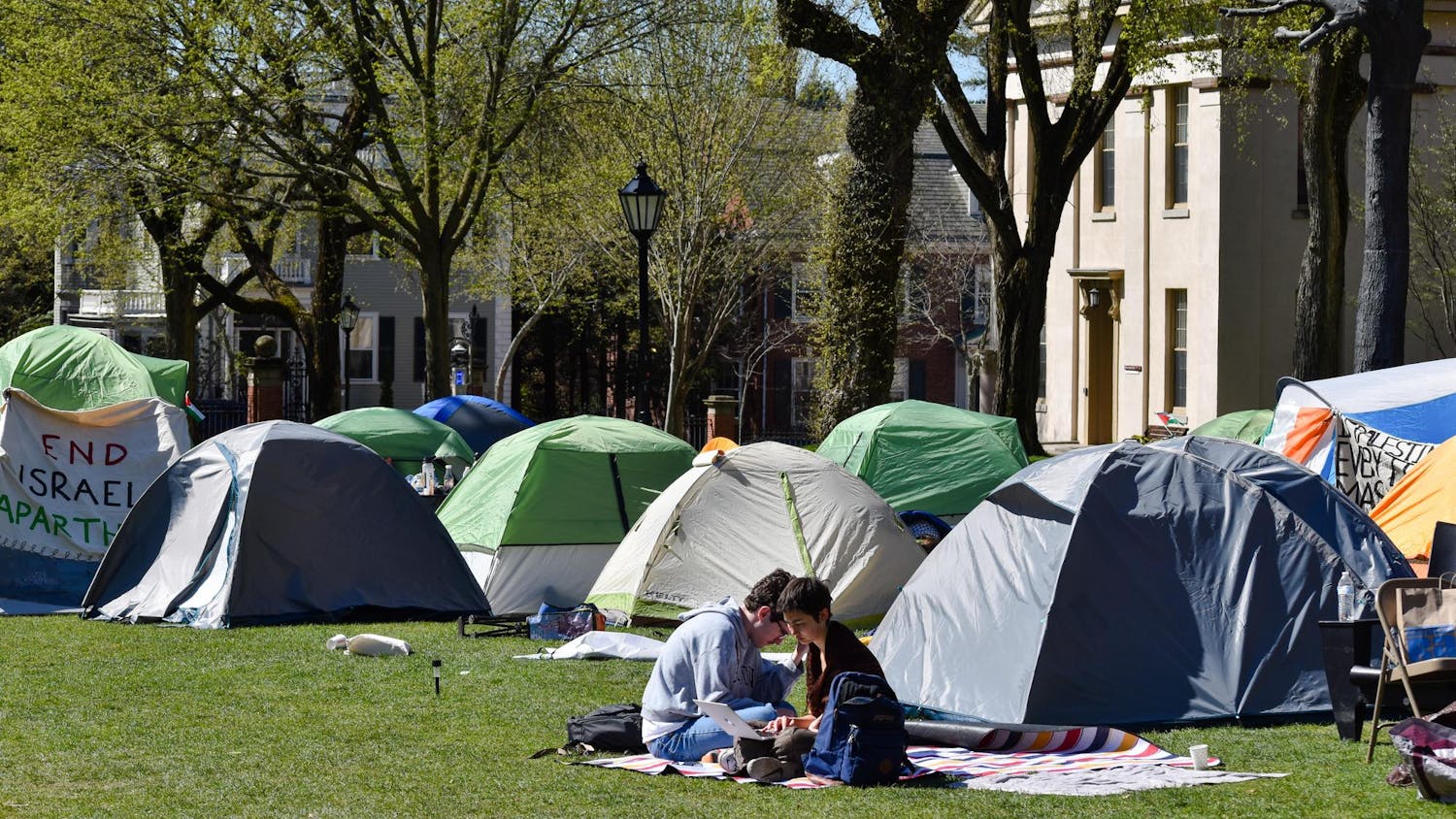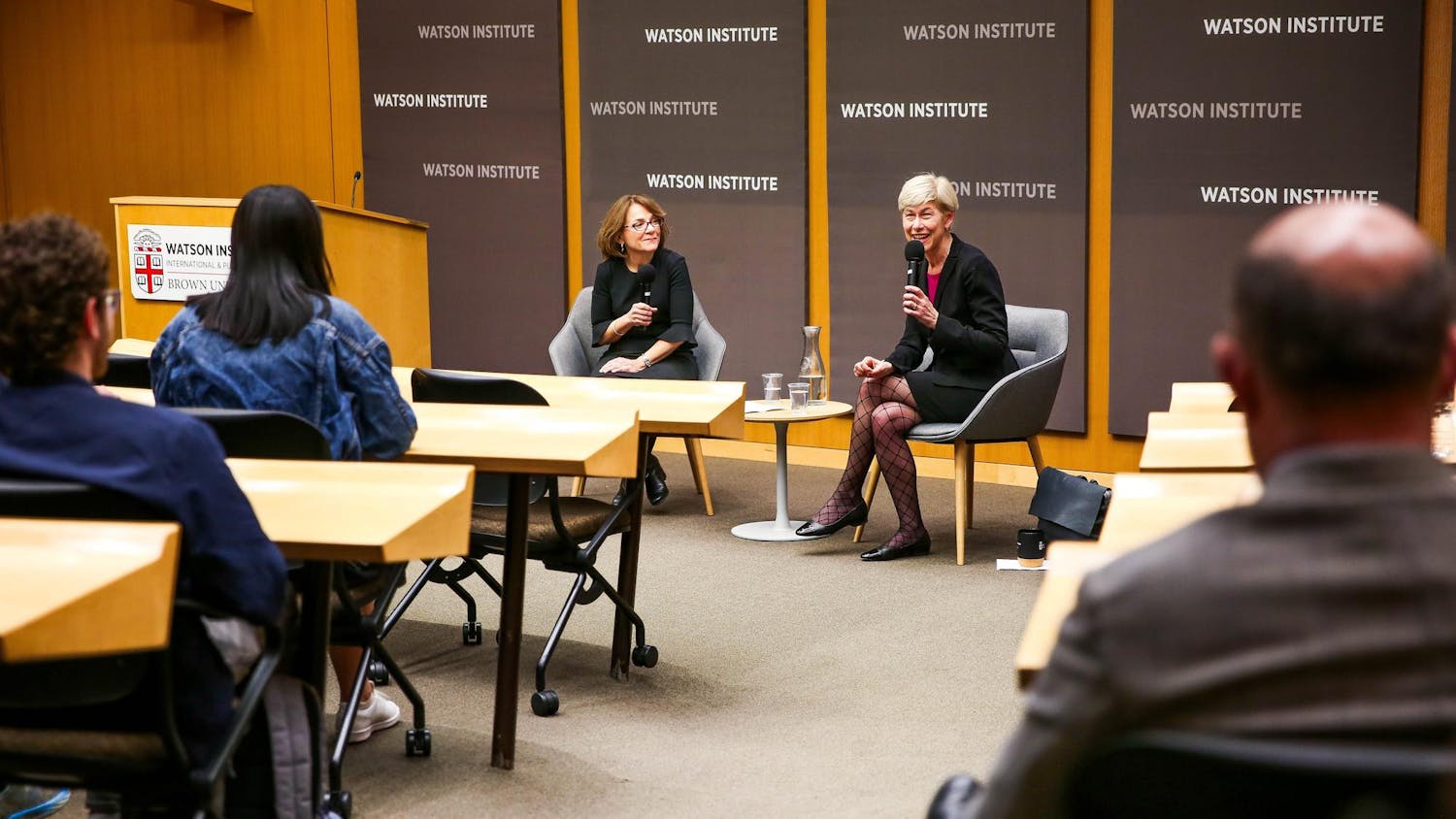Despite the widespread attention Brown has garnered as the home of the infamous SexPowerGod party, the University is less sexually freewheeling than its reputation suggests. Poll results reveal Brunonians may be having less sex than their peers across the country: Most students have only had one sexual partner or none at all this semester.
According to a recent Herald poll, 37.5 percent have not had any sexual partners this semester, and 36.4 percent have had one. A small percentage — 9.3 percent — had two partners this fall and an even smaller percentage — 5.3 percent — had three to five.
Meanwhile, 44.5 percent of college students nationwide had one sexual partner and 29.2 percent had none in the year spanning spring 2010 to spring 2011, according to the American College Health Association's National College Health Assessment.
The poll's findings are consistent with the estimates made by Health Education, a division of Health Services , said Naomi Ninneman, health educator at Health Services. She added that those numbers always surprise students. Students are under the impression that "everybody is having sex," she said.
Before seeing the results, Katherine Xiong '14 estimated that students had an average of three to five partners this semester.
Students get the idea that everyone around them is having sex both because students often exaggerate their sexual exploits and because everyone interprets sex differently, said Jenn Conti '12, co-chair of Sexual Health Education and Empowerment Council, an undergraduate student group.
Assumptions of behavior toward sex are skewed because people are more vocal about having sex than not having sex, said Aida Manduley '11, co-chair of the group.
No one says, "This weekend, I didn't have sex," Jenny Tsai '14 said.
The misconception is especially strong for first-years, who often think that college is "a land of sexual bountifulness," Manduley said.
But almost half of polled first-years have found College Hill to be far less plentiful. First-years are having less sex than upperclassmen — 49.8 percent have had zero sexual partners this semester, compared to 28.6 percent of seniors.
Conti suggested the difference comes from the fact that first-years are building friendships rather than finding hookups.
John Hammond '12, who estimated results similar to the actual poll results before finding out the outcome, originally thought first-years were more promiscuous. Brown has a "casual sex scene," he said, where people are "down to get down."
But Ben Winkler '11, a founding member of the Sexual Health Awareness Group, or SHAG, said he believes if the poll asked about number of hookups as well as sexual partners, the difference between first-years and upperclassmen might narrow. As a Residential Counselor, he suggested first-years are finding physical intimacy even if that intimacy does not necessarily count as a sexual partner, he said.
The results also do not take into account that a person in a monogamous relationship may have only one sexual partner while having sex multiple times a week, Conti said.
Poll results also suggested male students have had more sexual partners than female students this semester. Over half of polled males — 55.9 percent — have had at least one partner, compared to 48.3 percent of polled females.
Often, when the outcome of a sexual encounter is ambiguous, men have a tendency to round up, whereas women might round down, Winkler said.
Despite the differences and ambiguities associated with sex and sexual partners on campus, "sex is a hot topic no matter where you go, because it's an important part of being human," Manduley said. "After all, sex is how we all got here."
Methodology
Written questionnaires were administered to 851 undergraduates November 2–3 in the lobby of J. Walter Wilson and the Stephen Robert '62 Campus Center during the day and the Sciences Library at night. The poll has a 3.1 percent margin of error with 95 percent confidence. The margin of error is 4.6 percent for the subset of males, 4.3 percent for females, 6.4 percent for seniors, 3.6 percent for non-seniors, 6.3 percent for first-year students, 3.6 percent for non-first-years, approximately 4.7 percent for students receiving financial aid, 4.2 percent for students not receiving financial aid, approximately 9.2 percent for varsity student-athletes and 3.3 percent for non-varsity-student-athletes.
Find results of previous polls at thebdh.org/poll.
ADVERTISEMENT




